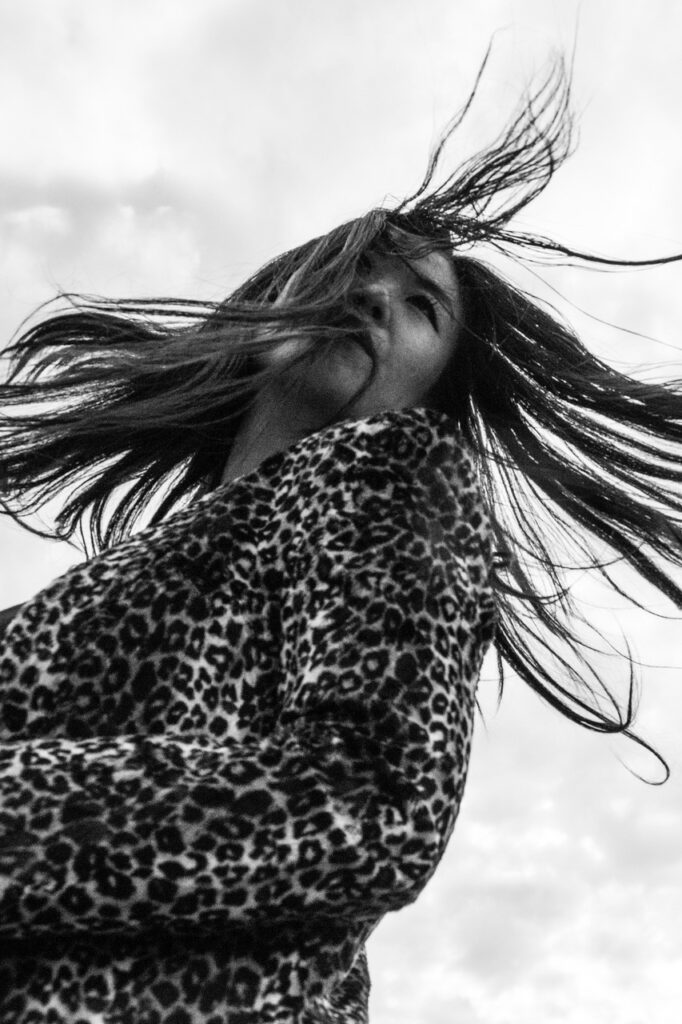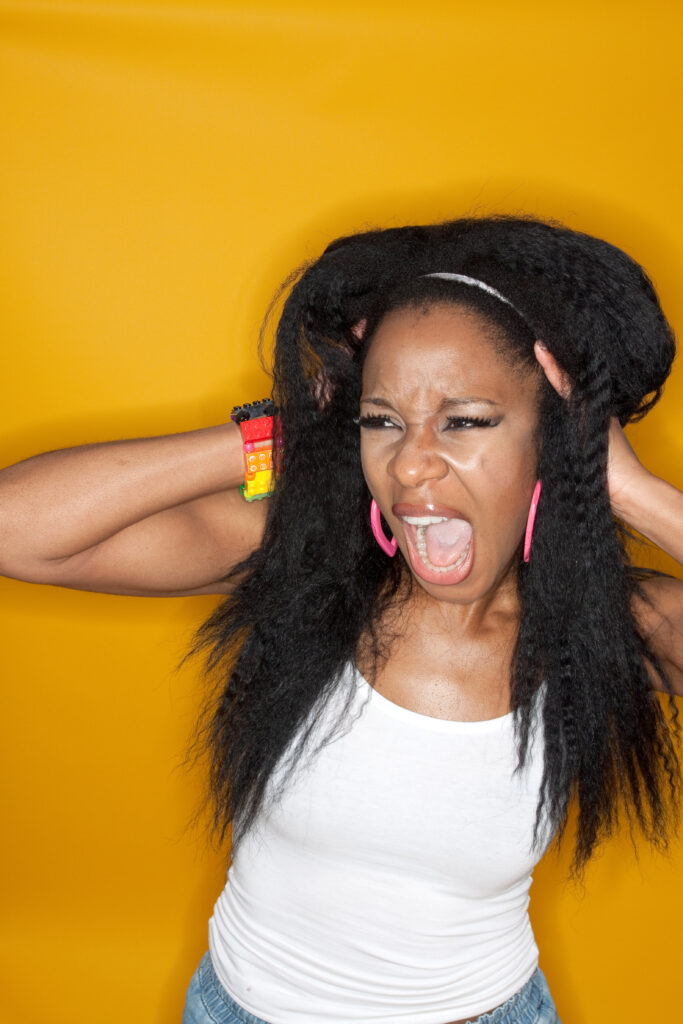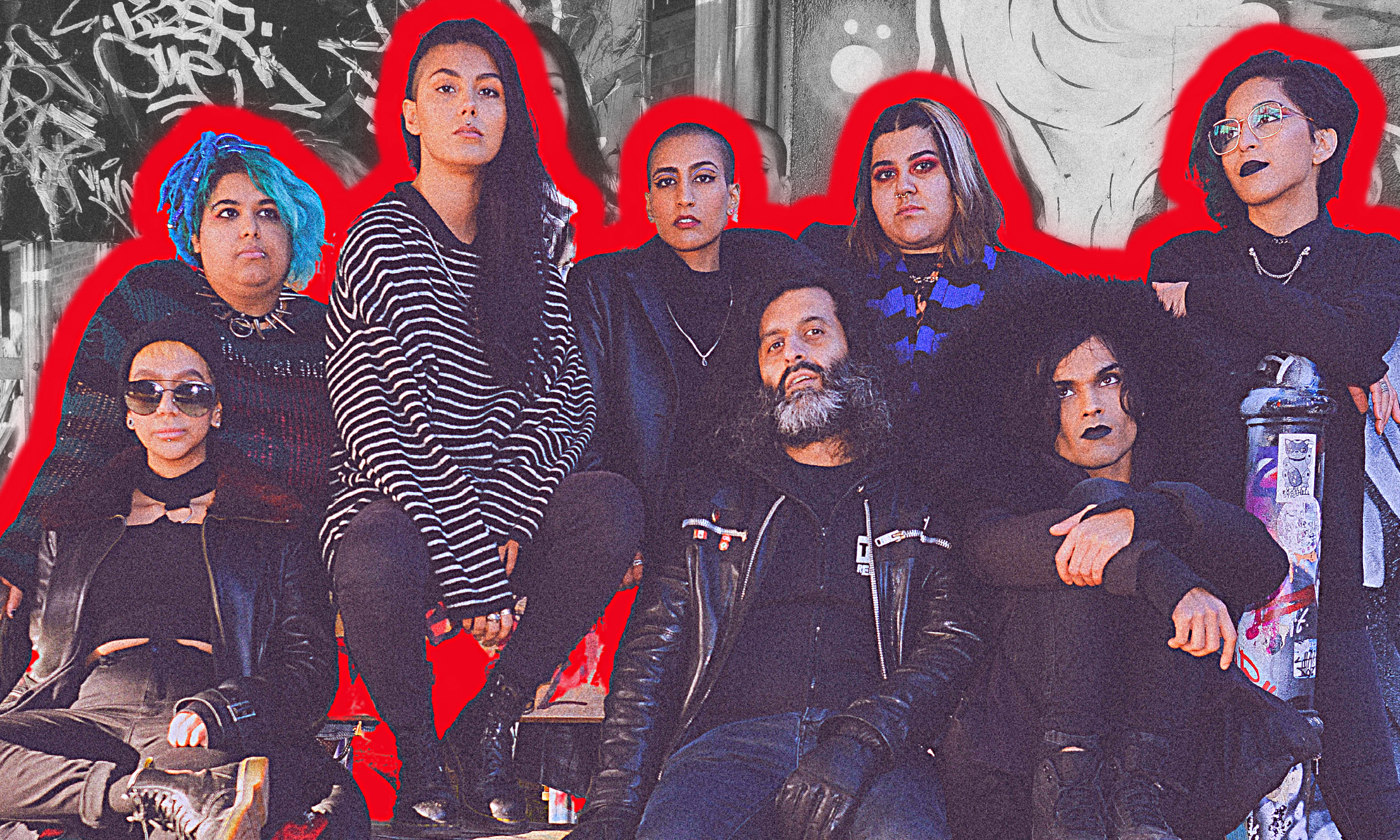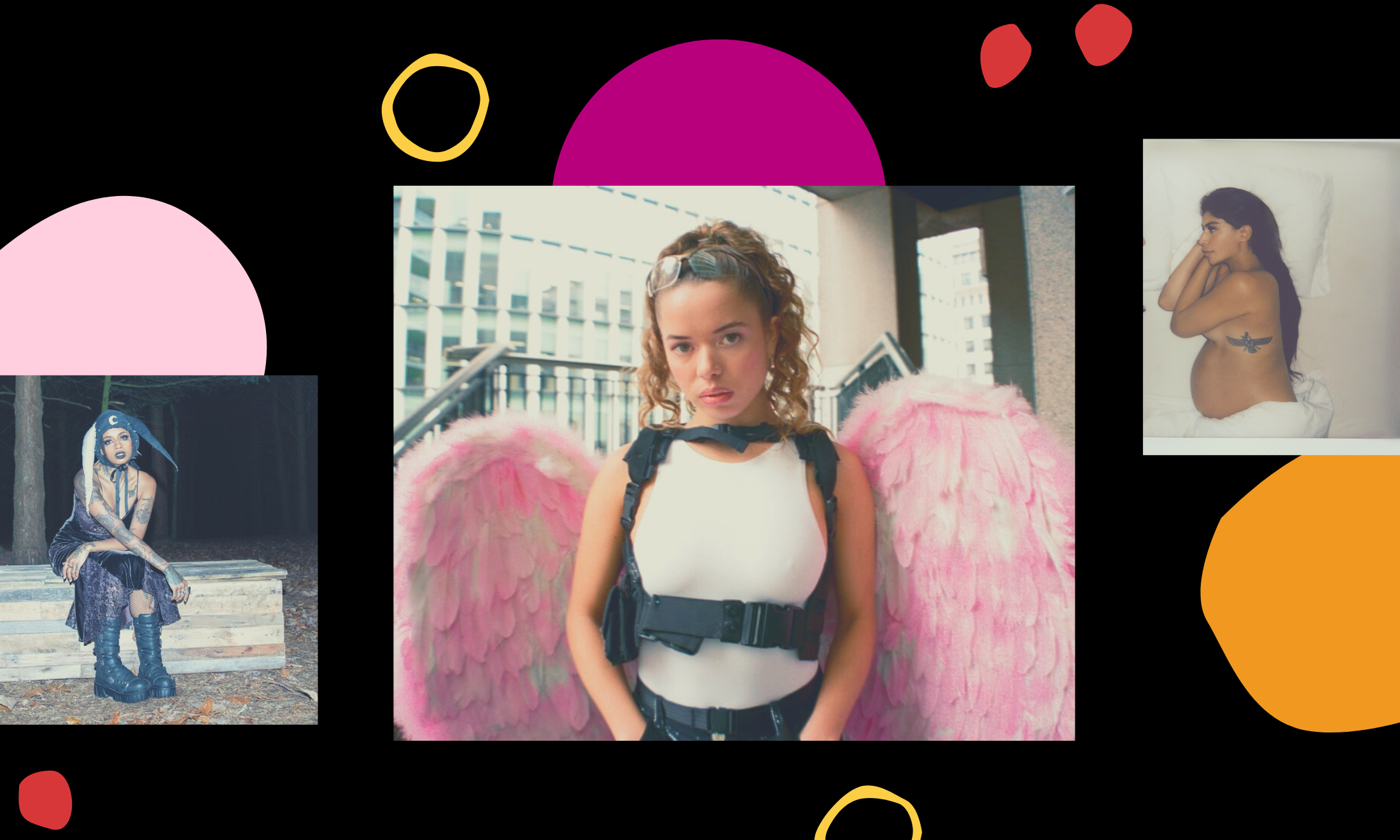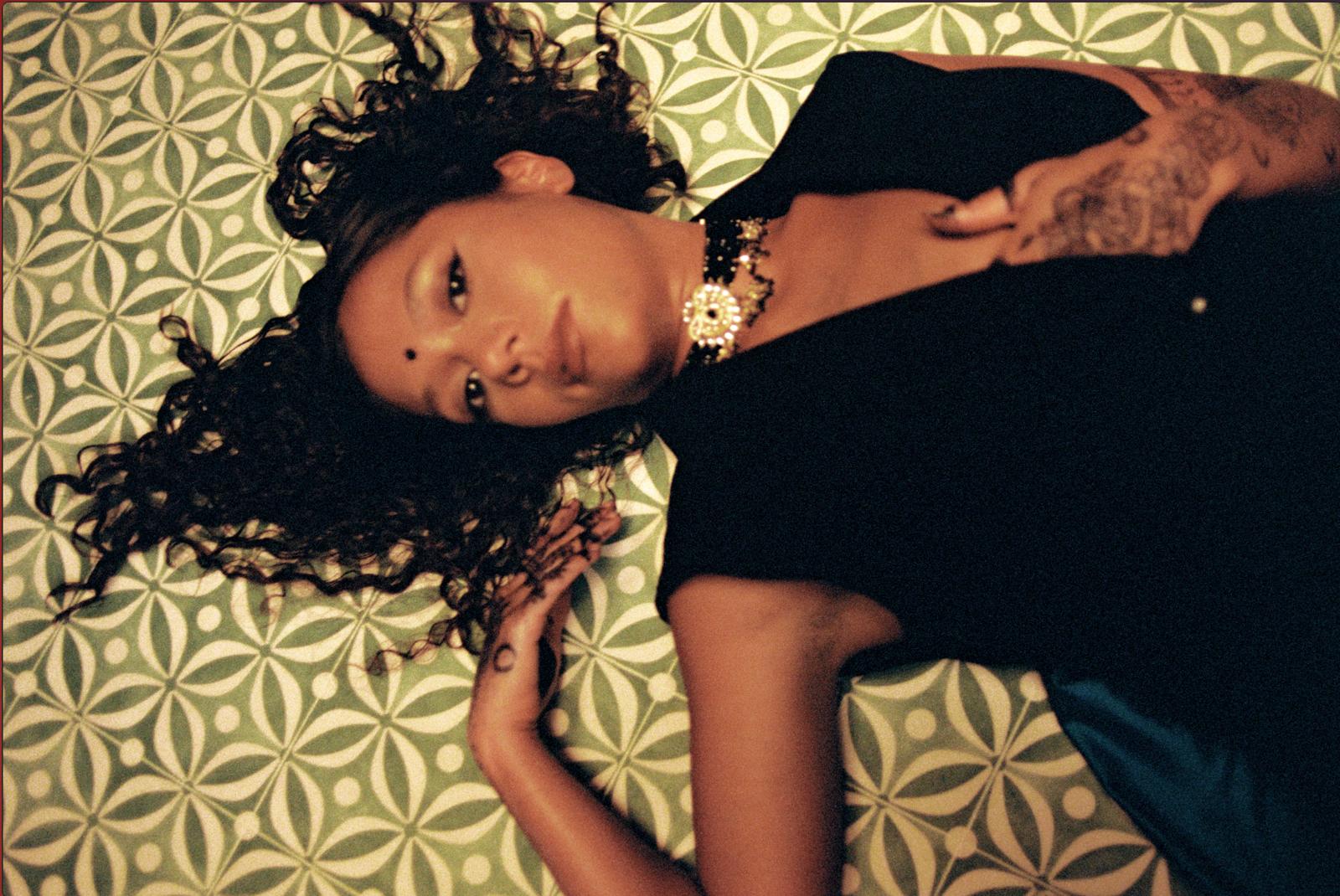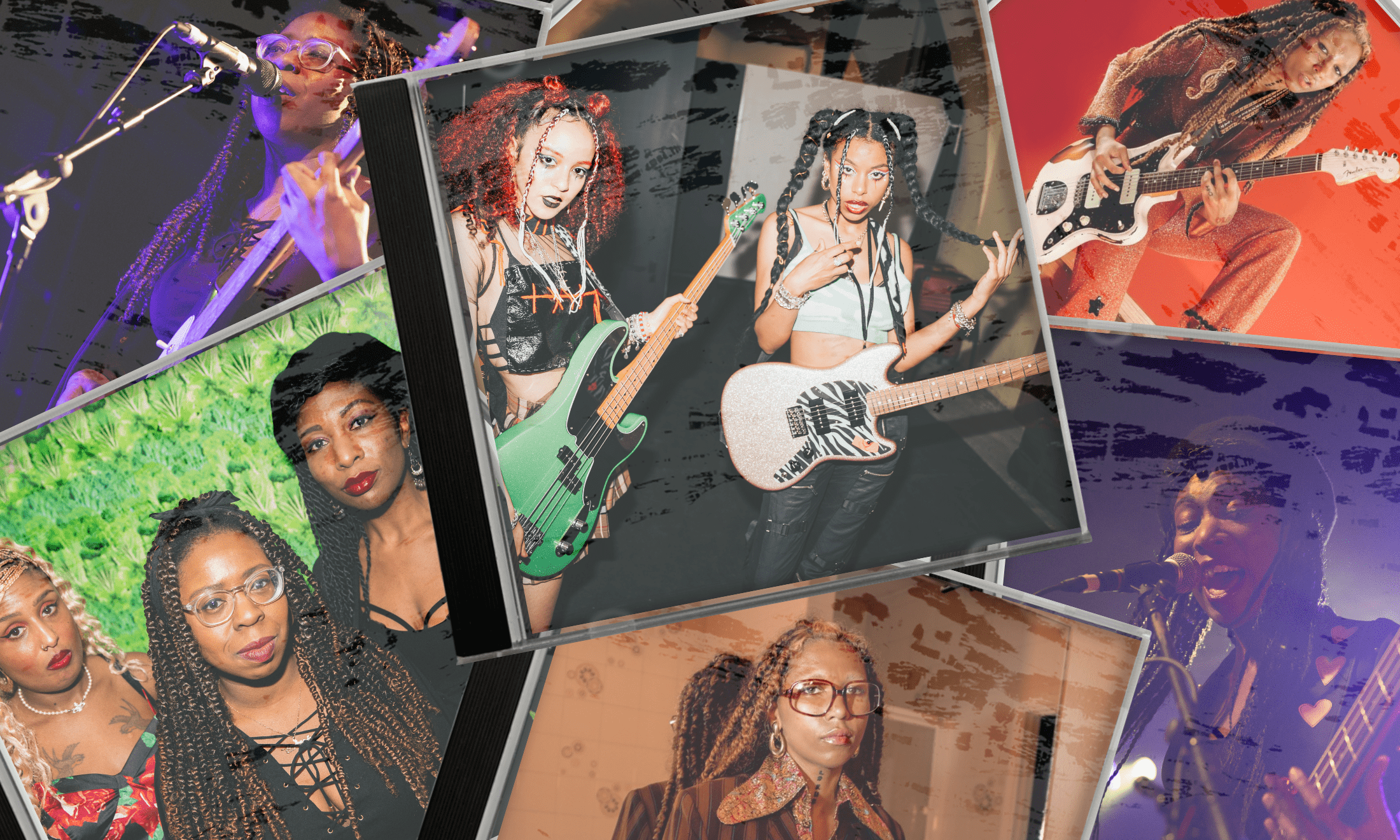‘Everyone was a white man’: being a woman of colour in the 2000s indie scene
20 years after The Strokes set forth a new era of rock’n’roll, Stephanie Soh speaks to the members of LCD Soundsystem, New Young Pony Club and The Go! Team who didn’t quite fit the skinny white dude mould.
Stephanie Soh
30 Jul 2021

collage from Wikimedia Commons and Flickr, L-R: Santigold, Bat For Lashes, Nancy Whang, Ninja, Tahita Bulmer, Karen O, Lovefoxxx.
“All these new clubs and parties started opening up and happening here, and they were fun,” says Nancy Whang. “They weren’t necessarily bottle service places for people with loads of money… it was just a bunch of dirtbags hanging out.”
The singer, synth and keyboard player from LCD Soundsystem is fondly reliving the indie music scene of the 2000s, when her much-beloved band had their come up. Attributing the unique atmosphere partly to the turn of the millennium and a post-9/11 feeling of having nothing to lose – particularly in New York, where LCD Soundsystem are based – Nancy says, “There was just this collective energy and need to change things, and disrupt the way that things were.”
But this change and disruption didn’t go so far as to challenge long-held ideas about musicianship and authenticity, and who these characteristics were the preserve of. So what better time to look back on that decade’s indie scene, and hear from the women of colour artists who were so vastly outnumbered within it, than on the anniversary of Is This It?
“Four white guys in leather jackets was the epitome of authenticity in the English music scene, and anything that didn’t look like that was immediately just written off as being some sort of frivolous exercise”
Tahita Bulmer, New Young Pony Club
First released in Australia on 30 July 2001, the critical and commercial success of the Strokes’ debut album is widely seen as the moment when the floodgates opened for a wave of indie rock acts to follow. Over the 2000s, countless guitar bands entered the charts, headlined shows and were cooed over by the music press. Some, like the White Stripes, Yeah Yeah Yeahs, and Arcade Fire, broke great new ground of their own, while the less distinctive sounds and proliferation of others – countless rake-thin white boys with band names prefixed with ‘The’ – would earn them the label of ‘landfill indie’.
I loved – still love – the Strokes, and fancied its lead singer, Julian Casablancas, with a passion that could only be matched by my love for, errr, other boys in other bands. And there were so many other boys, in so many other bands. Awards shows, ‘best of’ lists and festivals were packed with more sausage than a meat factory. When acts did include women, they were notable for being ‘female-fronted’ or having ‘a lady drummer’.
Even rarer was the presence of women of colour – not that I thought about it very much back then. I feel great affection and nostalgia for that era, but I realise that I did not, at the time, have the framework to critique its homogenous race and gender status quo. In hindsight, the indie scene manifested a certain kind of racism and sexism that was tacitly accepted in that decade, when a multitude of music made by people of colour was pigeonholed as ‘urban’ and women were deemed not serious enough to create ‘authentic’ art.
So what was it like being a woman of colour musician, working in a scene so in thrall to the apparently exclusive creative genius of white men? It’s telling that when I sat down to think about who could speak from this perspective, only a few names came to mind; including Karen O, the Yeah Yeah Yeahs’ tour de force frontwoman; Arcade Fire’s Régine Chassagne, and Jenny Lee Lindberg of Warpaint. And – perhaps not fitting or wanting to be bound by the idea of what an indie musician should look and sound like (once again, read: white men) – many of these women of colour made ‘indie’ music that transgressed the strict definition of the genre. Bat For Lashes, for instance, has always eschewed a raucous guitar-bass-drums set up for rich, haunting arrangements. As the lead singer of CSS, Lovefoxxx lent her vocals to tracks driven by disco beats. Then there’s Santigold, who has drawn from rock, reggae and electro to create her own distinctive, thrilling sound.
Something similar can be said of Tahita Bulmer who, as the lead singer of New Young Pony Club, set out to create disco-influenced guitar music that sounded “like The Stooges and Donna Summer were trapped in a lift”. Their 2008 single ‘Ice Cream’ still has the power to make me feel like I could be the coolest person on the dancefloor. “It was a great scene in the sense that it was full of energy,” Tahita says of the indie era. But otherwise, she found herself “very bored by a lot of what was coming out”. “It was just like, god, can we have some glamour?,” she says. “Can we have some fun? Can we have some vaginas actually, in these bands please? Some sexiness that isn’t about not having bathed for a week and a half and being a guy?”
“In my efforts to blend in, I never demanded space”
Nancy Whang, LCD Soundsystem
Looking back, Tahita recalls that the demographic of those pulling the shots behind the scenes reflected the artists they encouraged us to celebrate: “The people who were gatekeepers, like journalists and radio promoters – everyone was a white man.” New Young Pony Club, on the other hand, were one of a small minority of bands to include both men and women. This attracted both confusion and condescension from others in the industry: Tahita remembers the band’s drummer, Sarah Jones, blowing away male musicians who’d previously assumed she’d be “totally shit” at her job, and a journalist from Q magazine who “basically said to us, ‘You’re just doing this to wear pretty dresses and get free clothes’.

“There was always this underlying sense that our credentials as an indie band or as a rock-influenced band couldn’t be altogether trustworthy,” she says. “I saw that at the time, maybe naively, as being based in this obsession with four white guys in leather jackets being the epitome of authenticity in the English music scene, and anything that didn’t look like that was immediately just written off as being some sort of frivolous exercise.”
Tahita, who is mixed-race and whose mother is from Trinidad, says that due to her pale complexion, people in the music industry did not see her as a black woman. Although this allowed her to occupy a certain place of privilege, one upshot was feeling like part of her identity had been ignored: “I don’t remember many interviews where people actually asked me about my opinion or what my background had done in terms of my influences, or how being from a mixed-race family influenced my writing or my lyrics, so I didn’t really feel seen.”
Another woman of colour to make moves in the variously named ‘electro-indie’ / ‘disco-punk’ / ‘dance-rock’ sphere is the aforementioned Nancy Whang, who recalls that she was sometimes confronted with a certain dismissiveness from people: “Especially in the beginning when we were touring, it was just us and we didn’t really have a crew. We would pack and set up our own gear, [and some people were] just surprised that I knew how to assemble my rig or that I knew how to plug in an amplifier,” she says.
“We would pack and set up our own gear, and some people were just surprised that I knew how to assemble my rig or that I knew how to plug in an amplifier”
Nancy Whang, LCD Soundsystem
But Nancy, who is Korean-American, admits that her realisation about how exclusive the scene was has been a relatively recent one. “I was just so used to what that demographic looked like – mostly straight white guys – that it never occurred to me,” she says. “I also grew up in a really white place, so it never really occurred to me to think about it.” Back in LCD Soundsystem’s early days, when she was the only woman in the band, Nancy says she also tried not to stand out too much by, for example, going through a phase where she wouldn’t dress up or wear makeup. “In my efforts to blend in, I never demanded space,” she says. “On the one hand I didn’t really need it; I didn’t feel like I was not being treated well or treated unfairly. We were all the same; we all had the same accommodations made for us and it was equal – but men and women don’t always have the same needs!” She laughs as she says this last part, pointing out what now feels painfully obvious.
For the Go! Team’s Ninja, who started out as a young rapper from London, becoming a veteran of indie / alternative / whatever genre you want to call that group’s eclectic, sample-heavy music, was not something she could have predicted. Today, she has served as the lead live vocalist for the band since 2004, yet says she still feels “like I’m looking at it from the outside.” She continues, “I never planned to go into rock or indie. I was a solo rapper doing my own thing, listening to hip-hop, and I didn’t care about white music or white bands.” This changed after she joined the band, via an advert calling for a woman rapper to perform vocals for the Go! Team’s largely instrumental songs at their live shows. “I was watching amazing cult bands that I’d never heard of, but who were massive,” she reminisces of that period. “There’s loads of stuff that I came to really enjoy.”
Ninja, who is of Nigerian descent, says that she doesn’t think she was treated negatively by the industry due to her race or gender. “I am aware that because I’m black, I sometimes tick boxes and I’m not offended by that at all,” she says. “It has given me some great opportunities and opened some doors for me.” She goes on to explain that she thinks her fair treatment may partly be because the Go! Team – which has changed its lineup over the years – has always been made up of members of different races and genders, because their sound differentiated them from the indie bands of the 2000s, and because they have remained a cult act of unknown faces.
“They always want more of the same – they want the last big success. A major label needs to have ploughed loads of money into someone massive, so other labels will be like ‘Oh that did work, let’s get our own version of that’”
Ninja, The Go! Team
But later on, Ninja acknowledges the industry’s flaws when it comes to promoting diversity. “They always want more of the same – they want the last big success,” she says. “A major label needs to have ploughed loads of money into someone massive, so other labels will be like ‘Oh that did work, let’s get our own version of that’”. She adds, “I don’t think anyone would have been ready for an all-black indie band because that had never been done. I just think they wanted more of the same.”
While improvements in the UK and North American music industries have been made since the 2000s, with more people of colour receiving the serious critical consideration and record label support they deserve, indie rock is still largely seen as a white genre dominated by men. Nevertheless, women of colour like Arlo Parks, Jay Som and Mitski are forging ahead.
And so is Ninja, who is planning to launch an all-black girl band in the next year or so. “I don’t even know if it’s going to be possible,” she says, in reference to her childcare and Go! Team commitments. “I just know I have to do it because now’s the time: now’s the time for women, now’s the time for black people, now’s the time for a black rock band. So I have to do it.”
The Go! Team’s new album, Get Up Sequences Part One, is out now.

